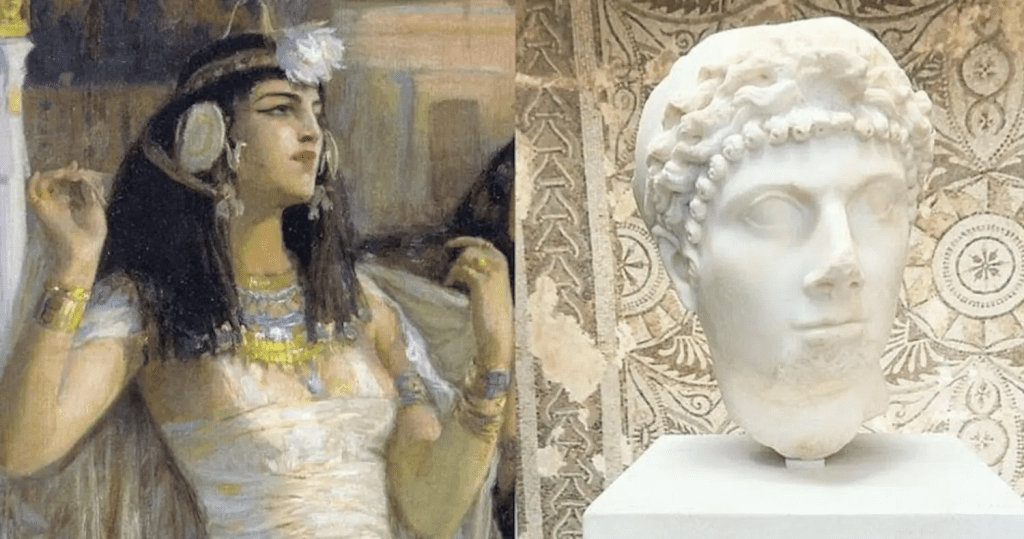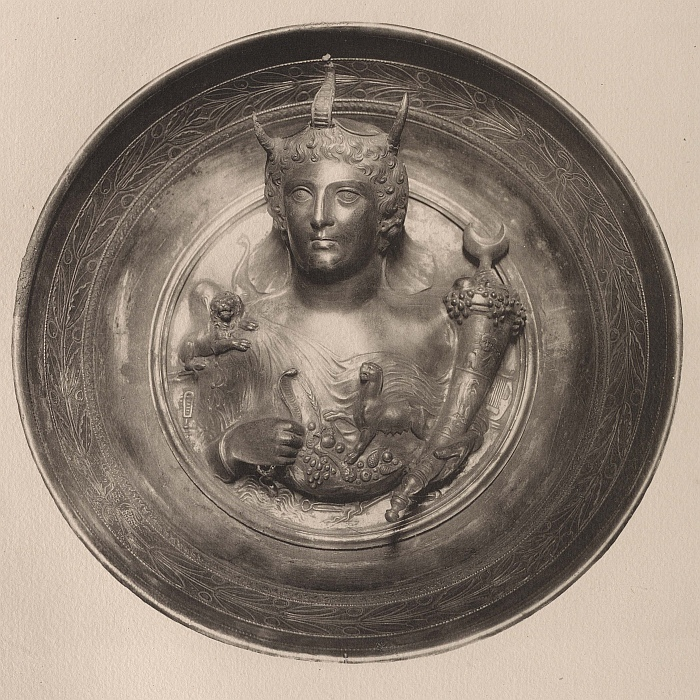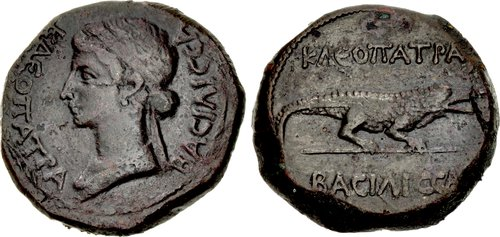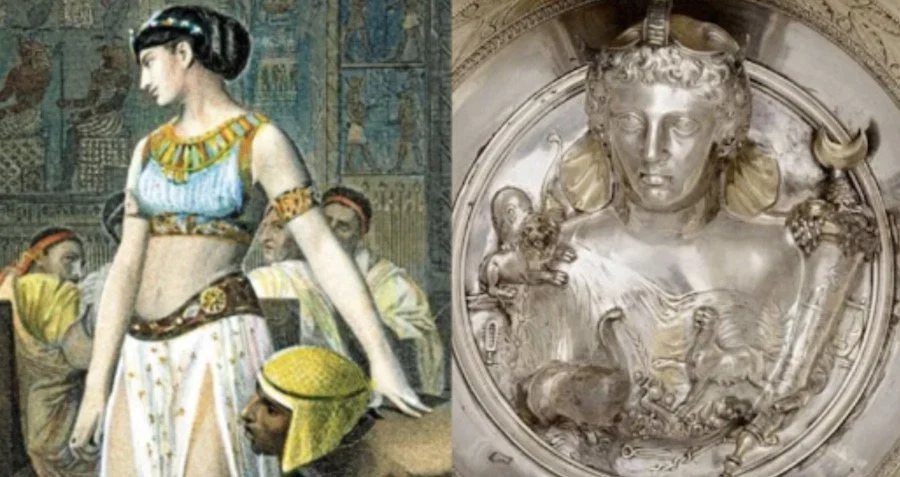Kleopatra Selene II, born in 40 BCE, was the daughter of two of the most iconic figures in ancient history Cleopatra VII, the last pharaoh of Egypt, and Mark Antony, the Roman general and lover. Her life story is one of survival, adaptation, and the blending of cultures at a time when empires were falling and rising. As a child, Selene witnessed the tragic collapse of her family’s power following the defeat of her parents by Augustus (then Octavian) in 31 BCE. Yet, against all odds, Selene would rise from the ashes of her family’s downfall to become a powerful queen in her own right, weaving together Egyptian, Greek, and Roman traditions into a unique reign.

The Tragic End of Her Parents and Survival
Cleopatra and Mark Antony’s reigns ended in dramatic fashion after their defeat at the Battle of Actium, where Octavian’s forces crushed their combined fleet. Following this defeat, both Cleopatra and Mark Antony took their own lives, and their children were left to face the repercussions of their parents’ downfall. Kleopatra Selene II, along with her twin brother Alexander Helios, was taken to Rome as a captive.

Though many children of fallen monarchs were often executed or disappeared into obscurity, Selene’s fate took a different turn. Augustus, the new emperor of Rome, chose to spare her life. Instead of being erased, Selene was raised in the imperial court, receiving a Roman education while surrounded by political intrigue. Her survival in the court of Augustus was a testament to her strength and adaptability. She had witnessed the fall of her own dynasty, and yet she would come to understand and navigate the complex world of Roman power, ultimately playing a key role in the story of Mauretania.
Video:
Cleopatra & Mark Anthony’s Daughter: Queen Cleopatra Selene II
Queen of Mauretania: A New Beginning
In 25 BCE, Augustus arranged for Selene’s marriage to King Juba II of Mauretania, a former client king of Rome. This political union was more than just an alliance it was a symbol of the blending of Egyptian, Greek, and Roman worlds. Juba II, also raised in Rome after the defeat of his own family, shared Selene’s background of survival and adaptation to Roman authority. Together, they ruled Mauretania, a kingdom located in the northwest of Africa, strategically positioned between Roman-controlled territories and the Berber tribes.
Mauretania itself was a kingdom of immense cultural significance. It lay at the crossroads of several cultures: the indigenous Berber people, the ancient Egyptian civilization, and the ever-expanding Roman Empire. Selene and Juba II brought together these diverse influences, forging a kingdom that blended Egyptian traditions with Roman governance. The reign of Kleopatra Selene II and Juba II was a testament to their ability to merge the old and the new, creating a prosperous and stable kingdom that stood out for its artistic and cultural achievements.

Caesarea: The Jewel of Mauretania
Under Selene and Juba II’s rule, the city of Caesarea (modern-day Cherchell, Algeria) became a vibrant capital that rivaled Alexandria, the legendary center of culture and learning in Egypt. The couple sought to create a city that was both beautiful and strategically important. Caesarea flourished under their leadership, with impressive architecture, sophisticated infrastructure, and an infusion of Egyptian, Greek, and Roman artistic styles.
Selene, who had been raised in the shadow of her mother’s great city of Alexandria, was determined to build a capital that reflected her royal heritage. Caesarea became a hub for intellectual and cultural exchange, with scholars, artists, and philosophers drawn to its vibrant atmosphere. The city was a reflection of Selene’s vision a place where the cultures of Egypt, Greece, and Rome could coexist, and where her reign could flourish.
Video:
AMPHIPOLIS ΤΟΜΒ & SELENE II của CLEOPATRA
Coins of a Queen: A Symbol of Her Legacy
One of the most lasting aspects of Selene and Juba II’s reign was the minting of coins with their faces on them, a rare and powerful act for a queen during this time. The coins depicted the couple’s likenesses, symbolizing the fusion of their ruling powers. These coins, with their unique iconography, became a tool of both political propaganda and cultural legacy. Through these coins, Selene and Juba II solidified their authority, and their reign became immortalized in the artifacts of the empire.
The coins also carried symbolic weight. They not only showcased the rulers’ authority over Mauretania but also highlighted the cultural synthesis that defined their rule. As a descendant of Cleopatra and Mark Antony, Selene was deeply tied to Egypt’s grandeur, yet as a queen married to a Roman ally, she was also part of the Roman world. The coins, bearing her image alongside Juba II, reflected this dual identity, embodying the essence of her reign: a bridge between the ancient Egyptian world, the Hellenistic legacy of the Greeks, and the expanding Roman Empire.

Legacy in Archaeology
Today, the legacy of Kleopatra Selene II lives on in archaeology, as her reign is remembered through the remnants of Caesarea, the coins minted during her time, and the historical records of her rule. While she is often overshadowed by her more famous mother, Cleopatra VII, Selene’s contributions to the cultural and political landscape of her time are significant. Her ability to adapt, survive, and thrive in a world of political upheaval is a testament to her resilience and intelligence.
Selene’s reign was a blend of history and legend. It serves as a reminder that, even in the face of overwhelming loss and uncertainty, great leaders can emerge leaders who, like Selene, transcend their circumstances and leave behind a legacy that resonates for centuries.

Conclusion: The Queen Who Defied the Odds
Kleopatra Selene II’s life was one of extraordinary resilience and remarkable adaptability. From the fall of her parents’ dynasty to her eventual rise as queen of Mauretania, Selene’s journey encapsulates the story of survival, political ingenuity, and cultural fusion. Through her marriage to Juba II, she became a powerful force in the Mediterranean world, blending the rich traditions of Egypt, Greece, and Rome to create a prosperous reign.
The city of Caesarea, the coins bearing her likeness, and the cultural legacy she left behind are all testaments to her impact on history. While her name might not be as widely recognized as her mother’s, Kleopatra Selene II’s legacy is one of strength, unity, and the ability to shape history through both power and grace.


